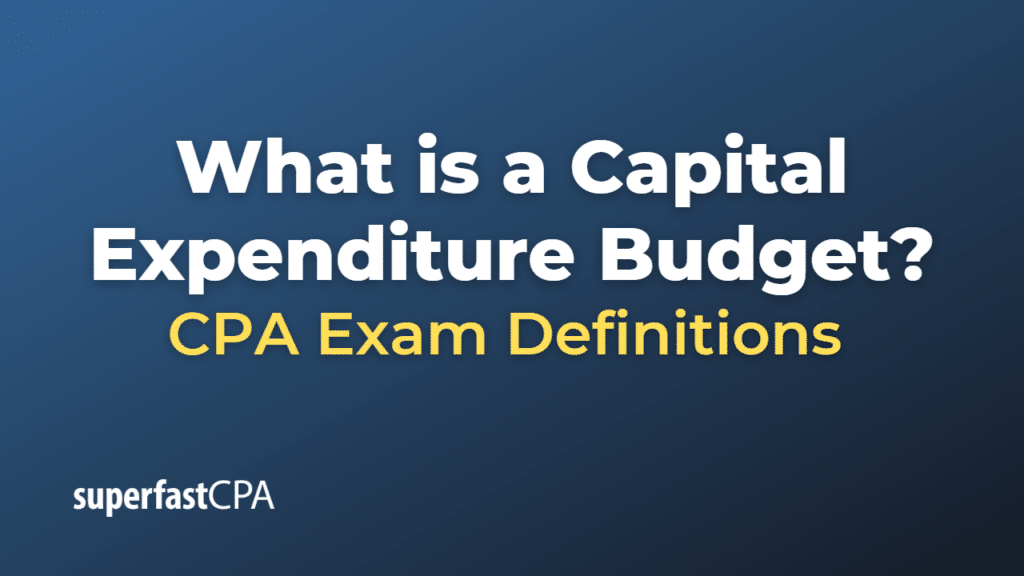Capital Expenditure Budget
A capital expenditure (CapEx) budget is a financial plan that outlines an organization’s anticipated investments in long-term assets over a specific period, usually one fiscal year. The budget helps companies prioritize, plan, and manage their investments in property, plant, equipment, infrastructure, and other long-term assets that generate value and contribute to the company’s growth and operational efficiency.
The CapEx budgeting process typically involves the following steps:
- Identifying needs: Department heads and decision-makers evaluate the organization’s long-term asset requirements, such as equipment upgrades, expansions, or new projects that will contribute to the company’s growth.
- Prioritizing projects: Organizations must prioritize potential investments based on factors such as strategic importance, return on investment (ROI), available funds, and alignment with the company’s long-term goals.
- Estimating costs: The costs associated with each potential investment, including acquisition, installation, and maintenance, are estimated to help determine the overall CapEx budget.
- Allocating funds: The organization allocates funds to the approved projects based on the prioritization and cost estimates, ensuring that resources are distributed effectively and in line with the company’s financial capabilities.
- Monitoring and controlling: Companies regularly monitor and control their capital expenditures to ensure that projects stay within budget, meet performance targets, and align with the organization’s strategic goals.
A well-prepared CapEx budget allows organizations to make informed decisions about their long-term investments, ensuring that they allocate resources effectively and make strategic choices that contribute to growth and success.
Example of a Capital Expenditure Budget
Let’s consider a fictional example of a university creating a capital expenditure budget for the upcoming fiscal year.
The university has identified several long-term investments that it believes will enhance its campus, improve its academic offerings, and attract more students. These projects include:
- Constructing a new science building with state-of-the-art laboratories and classrooms
- Upgrading the campus-wide network infrastructure for improved internet connectivity
- Renovating the student center to create more study spaces and modernize the facilities
- Purchasing new library resources, including books, databases, and digital materials
To create a capital expenditure budget, the university follows these steps:
- Identifying needs: The university has already determined the projects it believes are necessary for its growth and improvement.
- Prioritizing projects: The university decides to prioritize the projects based on their potential impact on the university’s reputation, student experience, and alignment with its strategic goals. In this case, they rank the projects in the following order: science building, network infrastructure, student center renovation, and library resources.
- Estimating costs: The university consults with architects, contractors, and other experts to estimate the costs of each project. They determine the following costs: $20 million for the science building, $5 million for the network infrastructure upgrade, $3 million for the student center renovation, and $2 million for library resources.
- Allocating funds: The university has a total capital expenditure budget of $25 million for the upcoming fiscal year. Based on the project prioritization and cost estimates, they allocate the funds as follows: $20 million for the science building, $5 million for the network infrastructure upgrade, and postpone the other projects to future fiscal years when more funds become available.
- Monitoring and controlling: Throughout the fiscal year, the university tracks the progress and spending of each project to ensure they stay within budget and meet performance targets. If there are any cost overruns or delays, the university can make adjustments to ensure the projects stay on track.
By creating a capital expenditure budget, the university can strategically invest in its long-term assets, make informed decisions about resource allocation, and ensure that it has a plan in place for achieving its growth and improvement goals.













